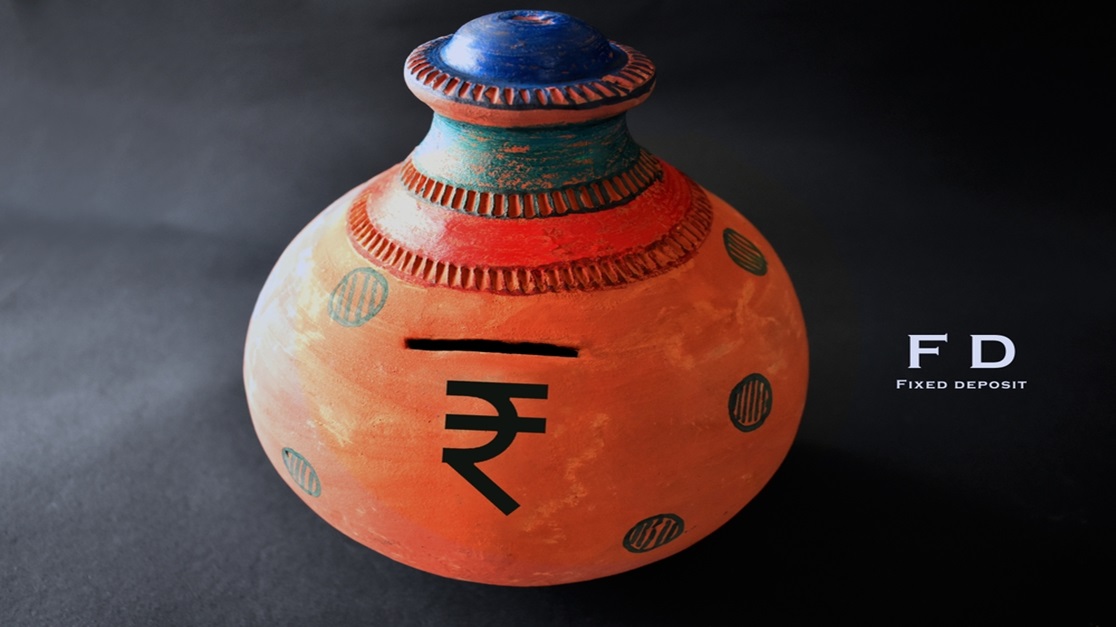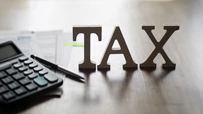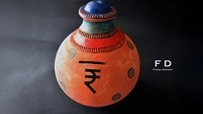How to Plan Your Investments with Fixed Deposits
Disclaimer: This blog is generic in nature. For planning your investments, please consult a SEBI-registered financial adviser to make informed decisions.
September 09, 2025

Are you looking for a reliable investment strategy that offers steady returns? Fixed Deposits (FDs) can be an excellent choice. By understanding how to plan investments with fixed deposits, you can make informed decisions that align with your financial goals. In this article, we will explore the benefits of fixed deposits and provide sample calculations to help you navigate the world of FD planning.
Understanding Fixed Deposits
Fixed deposits or bank deposits allow you to deposit a certain amount of money for a predetermined period at a fixed interest rate. They offer stability, security, and predictable returns, making them an attractive option for investors.
One of the key advantages of fixed deposits is their simplicity. Unlike other investment options, such as stocks or mutual funds, FDs require minimal knowledge or monitoring. You deposit a sum of money, choose the tenure, and earn interest on your investment. Also, FDs are not market-linked, ensuring stable and guaranteed returns.
Why Investors Prefer Fixed Deposits?
Here are a few benefits of fixed deposits, which is why it remains a popular choice even today.
1. Guaranteed Returns
Fixed deposits provide guaranteed returns. The interest rate remains fixed throughout the investment tenure, unless you opt for premature withdrawal. This makes them a safe investment option as compared to market-linked instruments like stocks and mutual funds.
2. Flexibility
FDs offer flexibility in terms of investment tenure. You can choose from short-term (less than one year), medium-term (one to five years), or long-term (five years or more) options based on your financial goals.
3. Regular Income
If you are looking for a steady source of income, FDs can be an ideal choice. You can choose from annual, quarterly or monthly interest payouts for regular income. However, this option is available only for non-cumulative FDs.
4. Loan and Overdraft Facility
Fixed deposits also offer the benefit of taking a loan against your deposit. In case of emergency or urgent financial needs, you can avail of a loan by pledging your FD as collateral. Similarly, you can opt for Overdraft against FD. The benefit of overdraft facility is you pay interest only on the drawn amount. the remaining amount keeps earning interest. Also, for loan against FD or overdraft, there's no EMI involved. You can repay the amount whenever you have additional cash at your disposal, before the maturity period.
Steps to Follow When Planning Investments with Fixed Deposits
When you plan investments with fixed deposits, consider implementing the following investment strategies for optimum returns:
1. Diversify Your Investments
Investing in multiple FDs across different schemes can help you take advantage of varying interest rates. This diversification allows you to benefit from higher rates offered by different schemes while maintaining liquidity.
2. Choose Higher Interest Rates
Not all banks offer the same interest rates on FDs. Research and compare rates from various financial institutions to find the best returns. Opting for a bank with competitive rates can significantly enhance your overall earnings.
3. Apply for Digital Fixed Deposit
Digital FDs offer convenience. You can book an FD from anywhere without visiting the bank branch. No paperwork required. Provide your PAN and Aadhar details, and complete your Video KYC to open a Digital Fixed Deposit - yes, it's that easy!
4. Utilise FD Laddering
Implementing an FD laddering strategy involves dividing your total investment into multiple FDs with varying maturity dates. This approach provides liquidity at regular intervals without incurring penalties. For instance, if you have a lump sum to invest, you could create several FDs maturing at different times (e.g., 1 year, 2 years, etc.). This way, if you need funds before the maturity of your longer-term FDs, you can withdraw from those that are maturing soon without penalties.
5. Opt for Cumulative FDs
Cumulative FDs reinvest the interest earned, allowing for compounding over time. This can lead to higher returns compared to non-cumulative FDs, where interest is paid out periodically. Consider cumulative FDs for long-term savings goals.
6. Avoid Premature Withdrawals
Withdrawing funds from an FD before maturity often incurs penalties and loss of interest. To maximise returns, keep your deposits until they mature unless absolutely necessary.
7. Take Advantage of Senior Citizen Rates
If applicable, invest in FDs in the name of senior citizens, as many banks offer higher interest rates for this demographic. This can significantly boost overall returns for your family. Kindly note that individuals aged 60 years or above are eligible for senior citizen FDs.
8. Stay Informed About Market Trends
Regularly monitor interest rate trends and economic conditions that may affect FD rates. Timing your investments based on favorable rates can maximise your returns. By employing these strategies, you can effectively maximise your returns from fixed deposits while ensuring your investments remain secure and accessible.
Comparative Table of FDs Vs Other Investments
| Liquidity | Risk | Tax benefits | |
| Fixed Deposits | High | Low | Under Sec 80c of IT Act for Tax Saver FD |
| Gold | High, especially for Gold ETFs | Medium to low | None |
| Equity/Mutual funds | High | High | None |
Final Thoughts
Fixed deposits offer a secure and straightforward investment option for those looking for stable returns. By better FD planning and utilising strategies like laddering or reinvestment options, you can maximise your returns.
Looking to grow your savings? Ujjivan SFB offers a wide range of fixed deposit products. Select the FD of your choice and take a step forward to your financial goals. Alternatively, you can browse through Ujjivan SFB product suite - our wide range of financial products are designed to make your financial life better.
Disclaimer:
The contents herein are only for informational purposes and generic in nature. The content does not amount to an offer, invitation or solicitation of any kind to buy or sell, and are not intended to create any legal rights or obligations. This information is subject to updation, completion, amendment and verification without notice. The contents herein are also subject to other product-specific terms and conditions, as well as any applicable third-party terms and conditions, for which Ujjivan Small Finance Bank assumes no responsibility or liability.
Nothing contained herein is intended to constitute financial, investment, legal, tax, or any other professional advice or opinion. Please obtain professional advice before making investment or any other decisions. Any investment decisions that may be made by the you shall be at your own sole discretion, independent analysis and evaluation of the risks involved. The use of any information set out in this document is entirely at the user’s own risk. Ujjivan Small Finance Bank Limited makes no representation or warranty, express or implied, as to the accuracy and completeness for any information herein. The Bank disclaims any and all liability for any loss or damage (direct, indirect, consequential, or otherwise) incurred by you due to use of or due to investment, product application decisions made by you on the basis of the contents herein. While the information is prepared in good faith from sources deemed reliable (including public sources), the Bank disclaims any liability with respect to accuracy of information or any error or omission or any loss or damage incurred by anyone in reliance on the contents herein, in any manner whatsoever.
To know more about Ujjivan Small Finance Bank Products Visit:"https://www.ujjivansfb.in"
All intellectual property rights, including copyrights, trademarks, and other proprietary rights, pertaining to the content and materials displayed herein, belong
to Ujjivan Small Finance Bank Limited or its licensors. Unauthorised use or misuse of any intellectual property, or other content displayed herein is strictly prohibited and the same is not intended for distribution to, or use by, any person in any jurisdiction where such distribution or use would (by reason of that person’s nationality, residence or otherwise) be contrary to law or registration or would subject Ujjivan Small Finance Bank Limited or its affiliates to any licensing or registration requirements.
FAQs
1. What are the risks associated with investing in fixed deposits?
The main risk associated with fixed deposits is inflation risk. As the interest earned may not keep up with inflation, it may erode the real value of your investment over time.
2. How can I track my FD investments?
Most banks provide online banking facilities where you can track your FD investments and view the current status of your deposits.
3. Can I open a fixed deposit jointly with another person?
Yes, you can open a fixed deposit jointly with another person. It offers the flexibility of shared ownership and can be beneficial for tax purposes.
4. Should FDs be a part of every investment strategy?
FDs should be a part of every investment strategy, as they offer assured returns, safety and liquidity
5. Are there any additional charges associated with opening a fixed deposit account?
Generally there are no charges when you open a regular fixed deposit account.
6. Why is it necessary to compare interest rates when you plan investments with fixed deposits?
Comparing interest rates for different tenures will enable you get the best interest rate on your fixed deposits. You can use our FD Calculator to compare returns.
Latest Blogs

Dussehra 2025: How to Win Your Financial Battles with Smart Saving
Dussehra 2025 (also known as Vijayadashami) falls on Thursday, October 2, 2025.

eSIM Scam in India: I4C Warns Mobile Users About Rising Fraud – How to Stay Safe
The Indian Cybercrime Coordination Centre (I4C), a wing of the Ministry of Home Affairs, issued a strong warning to mobile users about the rapid increase in eSIM fraud in India.

How to Link PAN with Aadhaar: Step-by-Step Guide & Consequences of Not Linking
Linking your Permanent Account Number (PAN) with your Aadhaar is no longer just a best practice.

Annual Information Statement (AIS): A Complete Guide for Stress-Free ITR Filing
India’s tax season is in its final stretch.

ITR-1 (Sahaj) Restrictions: Income Sources Not Allowed & Filing Rules
With just a few days left before the 15 September 2025 deadline for filing Income Tax Returns (ITRs) for Assessment Year (AY) 2025-26, many taxpayers are rushing to submit their forms online.





